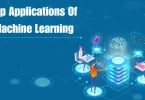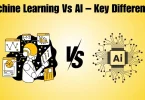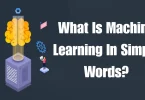Machine learning has become an essential part of the digital world. From personalized recommendations on Netflix to fraud detection in banking systems, machine learning is revolutionizing industries one model at a time. But let’s face it—building machine learning systems from scratch can be overwhelming, especially if you’re new.
That’s where Python comes to the rescue. Known for its simplicity and versatility, Python offers a treasure chest of libraries that simplify everything—from importing data to training deep neural networks.
In this guide, we’ll take you through the most powerful and popular Python libraries for machine learning. Whether you’re a total beginner, a student working on projects, or a seasoned developer optimizing complex models, these libraries will elevate your machine learning journey.
Why Python for Machine Learning?

Before jumping into the list, it’s important to understand why Python is the go-to language for machine learning.
- Simplicity: Clean syntax makes it easy to write and read code—even for non-programmers.
- Extensive Libraries: Python has a rich ecosystem of libraries that cover every aspect of machine learning.
- Community Support: Millions of developers and researchers contribute tutorials, tools, and open-source code.
- Flexibility: Python integrates easily with C/C++, Java, R, and cloud platforms, making it ideal for deployment and scaling.
- Popularity: Python is consistently ranked among the top programming languages in AI/ML research and industry.
Now let’s break down the top Python libraries for machine learning, grouped by their primary function: data manipulation, model building, deep learning, and evaluation.
Top Python Libraries for Machine Learning

Here are the most popular and useful Python libraries for machine learning:
1. NumPy (Numerical Python)
Use case: High-performance mathematical operations and array processing.
Why it’s essential:
NumPy is the foundation of almost every other scientific computing library in Python. It allows you to work with large multi-dimensional arrays and matrices, along with a collection of mathematical functions to operate on them efficiently.
Example:
python
CopyEdit
import numpy as np
arr = np.array([1, 2, 3])
print(arr.mean()) # Output: 2.0
2. Pandas
Use case: Data manipulation and analysis.
Why it’s essential:
With its powerful DataFrame and Series objects, Pandas makes it simple to clean, transform, analyze, and visualize data. It’s ideal for handling structured (tabular) data.
Example:
python
CopyEdit
import pandas as pd
df = pd.read_csv(‘data.csv’)
print(df.head())
Core Machine Learning Libraries
3. Scikit-learn
Use case: Traditional machine learning algorithms (SVMs, decision trees, linear regression, clustering, etc.)
Why it’s essential:
Scikit-learn is the go-to library for classical machine learning. It provides simple and consistent APIs for a wide range of supervised and unsupervised learning tasks.
Features:
- Model training and evaluation
- Feature selection and transformation
- Pipelines for workflow automation
Example:
python
CopyEdit
from sklearn.ensemble import RandomForestClassifier
model = RandomForestClassifier()
model.fit(X_train, y_train)
predictions = model.predict(X_test)
4. XGBoost (Extreme Gradient Boosting)
Use case: High-performance gradient boosting for structured/tabular data.
Why it’s essential:
XGBoost consistently tops Kaggle competitions due to its speed and accuracy. It’s especially effective with large datasets and complex decision trees.
Key benefits:
- Regularization to reduce overfitting
- Built-in cross-validation
- Support for missing values
You may also like to read this:
Realme Vs Samsung Budget Phone Review: Full Comparison
Best Tablets For Reading And Work: 2025’s Top 5 Compared
Beginner Guide: What Is Machine Learning In Simple Words?
Machine Learning Vs AI Key Differences In 2025
20 Top Applications Of Machine Learning You Must Know
23+ Best Machine Learning Projects For Beginners To Try
5. LightGBM (Light Gradient Boosting Machine)
Use case: Fast gradient boosting for large-scale data.
Why it’s essential:
Developed by Microsoft, LightGBM is optimized for both speed and memory usage. It uses a histogram-based approach that makes it faster than XGBoost in many cases.
Ideal for:
- Time-sensitive applications
- Real-time predictions
Deep Learning Libraries
6. TensorFlow
Use case: Building and deploying deep neural networks.
Why it’s essential:
Backed by Google, TensorFlow supports deep learning models for image recognition, NLP, speech processing, and more. It’s used both in research and production environments.
Features:
- GPU support
- TensorBoard visualization
- TensorFlow Lite for mobile apps
Example:
python
CopyEdit
import tensorflow as tf
model = tf.keras.Sequential([
tf.keras.layers.Dense(128, activation=’relu’),
tf.keras.layers.Dense(10, activation=’softmax’)
7. Keras
Use case: Rapid prototyping of deep learning models.
Why it’s essential:
Keras is a high-level API built on top of TensorFlow. It simplifies building deep learning models with just a few lines of code, making it perfect for beginners and fast prototyping.
Strengths:
- User-friendly
- Modular and extensible
- Great for academic experiments
8. PyTorch
Use case: Flexible deep learning and research-based model development.
Why it’s essential:
Preferred by many in academia, PyTorch allows dynamic computation graphs (define-by-run). This makes debugging and experimenting much easier compared to TensorFlow’s static graphs.
Highlights:
- Native support for CUDA (GPU)
- Strong ecosystem (TorchText, TorchVision, etc.)
- Hugging Face Transformers support
Example:
python
CopyEdit
import torch
x = torch.tensor([1.0, 2.0, 3.0])
print(x + 1)
Model Evaluation and Visualization Libraries
9. Matplotlib & Seaborn
Use case: Data visualization and exploratory data analysis (EDA)
Why they’re essential:
Visualizing data is crucial to understanding trends and insights. Matplotlib is the base library, while Seaborn sits on top of it and provides beautiful themes and statistical plots.
Example:
python
CopyEdit
import seaborn as sns
sns.boxplot(x=’category’, y=’value’, data=df)
10. Statsmodels
Use case: Statistical modeling and hypothesis testing.
Why it’s essential:
While Scikit-learn focuses on machine learning, Statsmodels is geared towards classical statistical analysis, such as OLS regression, time series models, and statistical tests.
Use it when:
- You need detailed model diagnostics
- You want to validate hypotheses
- You’re working with time series data
Getting Started: How to Install Python Libraries for Machine Learning
Before you can start using these libraries, you need to install them. The easiest way is to use pip (Python’s package installer) or conda (for Anaconda users).
Using pip (Recommended for most users):
Open your terminal or command prompt and run:
bash
CopyEdit
pip install numpy pandas scikit-learn matplotlib seaborn tensorflow keras torch xgboost lightgbm statsmodels
Using conda (for Anaconda users):
bash
CopyEdit
conda install numpy pandas scikit-learn matplotlib seaborn
conda install -c conda-forge tensorflow keras pytorch xgboost lightgbm statsmodels
Once installed, you can import these libraries in your Python scripts or Jupyter Notebooks and start coding right away.
Beginner-Friendly Machine Learning Project Ideas
Here are some simple yet powerful projects to help you practice each library:
| Library | Project Idea |
| Pandas | Clean and analyze a COVID-19 dataset using DataFrames |
| Scikit-learn | Build a spam email classifier using Naive Bayes |
| XGBoost | Predict housing prices from structured data |
| TensorFlow/Keras | Train a digit recognizer with the MNIST dataset |
| PyTorch | Build a sentiment analysis model for movie reviews |
| Seaborn | Visualize correlations and distributions in Titanic survival data |
| Statsmodels | Perform linear regression and statistical testing on advertising data |
These projects are not only great for learning but also strong additions to your data science portfolio.
Real-World Applications of Python ML Libraries
Let’s look at how these libraries are used in real industries to solve big problems:
Image Recognition
- Libraries Used: TensorFlow, Keras, PyTorch
- Application: Face detection in smartphones, object detection in self-driving cars.
Natural Language Processing (NLP)
- Libraries Used: PyTorch, Hugging Face Transformers, Scikit-learn
- Application: Chatbots, spam detection, sentiment analysis on social media.
Financial Modeling
- Libraries Used: XGBoost, LightGBM, Statsmodels
- Application: Credit scoring, fraud detection, stock price prediction.
Healthcare
- Libraries Used: TensorFlow, Scikit-learn, Pandas
- Application: Disease diagnosis, medical image analysis, drug discovery.
E-commerce
- Libraries Used: Scikit-learn, Pandas, Matplotlib
- Application: Product recommendation engines, customer segmentation, sales forecasting.
Next Steps in Your Machine Learning Journey
If you’ve made it this far, you’re already ahead of the curve! But learning machine learning isn’t a one-time event—it’s a journey. Here’s how you can keep progressing:
Step 1: Master the Basics
- Start with NumPy, Pandas, and Matplotlib to understand how to work with data.
Step 2: Learn Classical ML Models
- Move on to Scikit-learn to understand supervised and unsupervised learning.
Step 3: Dive into Deep Learning
- Explore Keras, TensorFlow, or PyTorch to build neural networks.
Step 4: Explore Advanced Topics
- Learn about model tuning, deployment, cloud ML, and real-time inference.
Step 5: Build and Share Projects
- Apply your skills on datasets from Kaggle, UCI ML Repository, or real-world APIs.
How to Choose the Right Python Library for Your ML Project
Choosing the right library depends on what kind of problem you’re solving. Here’s a simplified guide to help you match the library to your task:
| Task Type | Recommended Libraries |
| Data cleaning & exploration | Pandas, NumPy, Seaborn |
| Building traditional ML models | Scikit-learn, XGBoost, LightGBM |
| Deep learning (image, NLP, etc.) | TensorFlow, Keras, PyTorch |
| Statistical modeling & forecasting | Statsmodels, Scikit-learn |
| Visualization | Matplotlib, Seaborn |
| High performance or large data | LightGBM, Dask, TensorFlow |
| Quick prototyping | Keras, Scikit-learn |
| Production deployment | TensorFlow, ONNX, PyTorch + TorchScript |
Pro Tip:
Don’t limit yourself to just one library. Often, you’ll combine several—like using Pandas for preprocessing, Scikit-learn for training, and Matplotlib for visualization.
Best Practices When Using Python ML Libraries
- Understand the basics of ML theory first
Don’t rely only on the library’s magic—know the “why” behind the model. - Keep your environment clean
Use virtual environments (like venv or conda env) to manage dependencies and avoid conflicts. - Document your experiments
Tools like MLflow, TensorBoard, or even a Jupyter notebook with markdown cells help keep track of what works and what doesn’t. - Use pipelines and modular code
Libraries like scikit-learn.pipeline and TensorFlow’s tf.data API can help structure your code better. - Don’t skip evaluation
Use tools like cross-validation, confusion matrices, and ROC curves to validate model performance properly. - Visualize everything
A graph or heatmap can often tell you more than numbers alone.
Best Free Learning Resources for Mastering Python ML Libraries
Books:
- “Python Machine Learning” by Sebastian Raschka – great for Scikit-learn, TensorFlow, and real-world projects.
- “Deep Learning with Python” by François Chollet – authored by the creator of Keras, focuses on deep learning intuitively.
YouTube Channels:
- StatQuest with Josh Starmer – For simple explanations of ML concepts.
- Corey Schafer – Great Python tutorials including Pandas, Matplotlib, and more.
- freeCodeCamp – Full courses, including machine learning with Scikit-learn and deep learning with TensorFlow.
Online Courses (Free):
- Google’s Machine Learning Crash Course
- Coursera – Introduction to Machine Learning with Python by IBM
- Kaggle Learn – Practical, project-based learning using Pandas, Scikit-learn, and XGBoost.
Common Pitfalls to Avoid as You Learn
- Overfitting your model: Always use validation techniques and test sets.
- Using too many libraries too soon: Master a few first (like Pandas, Scikit-learn) before jumping into complex ones.
- Skipping data cleaning: The best model won’t help if your data is garbage.
- Not tuning hyperparameters: Use tools like GridSearchCV or RandomizedSearchCV to optimize models.
- Not saving your models: Use joblib, pickle, or TensorFlow’s save_model() to avoid retraining every time.
Conclusion
The journey into artificial intelligence and data science doesn’t have to be intimidating. With the right tools in your hands, you can build smart, scalable, and impactful solutions—and that’s where Python libraries for machine learning come into play.
These libraries are not just utilities—they are the foundation of modern ML development. Whether you’re cleaning and analyzing data with Pandas, training models with Scikit-learn, or building deep neural networks with TensorFlow, each library empowers you to work more efficiently and effectively.
By mastering these Python libraries for machine learning, you’ll open doors to real-world applications in healthcare, finance, marketing, and more. And the best part? You don’t have to be an expert to get started.
Start small.
Keep practicing.
Combine your creativity with these powerful libraries—and you’ll be building intelligent systems in no time.
So go ahead, install your first library, start your first project, and embrace the full potential of Python in machine learning. Your journey begins now!
FAQs
1. What are the most popular Python libraries for machine learning?
The most popular Python libraries for machine learning include:
Scikit-learn for traditional ML algorithms
TensorFlow and Keras for deep learning
PyTorch for research and NLP
Pandas and NumPy for data manipulation
XGBoost and LightGBM for high-performance boosting
Matplotlib and Seaborn for data visualization
2. Are Python libraries for machine learning free to use?
Yes, all major Python libraries for machine learning are open-source and completely free to use. You can install them via pip or conda without any licensing cost.
3. Do I need to learn all Python libraries for machine learning to get started?
Not at all. Start with a few essential libraries:
Pandas and NumPy for data handling
Scikit-learn for basic models
Matplotlib for visualization
Once you’re comfortable, explore more advanced libraries like TensorFlow, PyTorch, or XGBoost.
4. Which Python library is best for deep learning?
The two most widely used Python libraries for machine learning in deep learning are:
TensorFlow: Great for production and deployment
PyTorch: Preferred in research and experimentation
Both support neural networks, GPUs, and advanced AI models.
5. Can I use multiple Python libraries for machine learning in the same project?
Absolutely. Most projects combine several Python libraries for machine learning. For example:
Use Pandas for cleaning data
Scikit-learn for model training
Seaborn for visualization
And XGBoost for boosting performance
Mixing libraries often leads to better and more flexible solutions.




